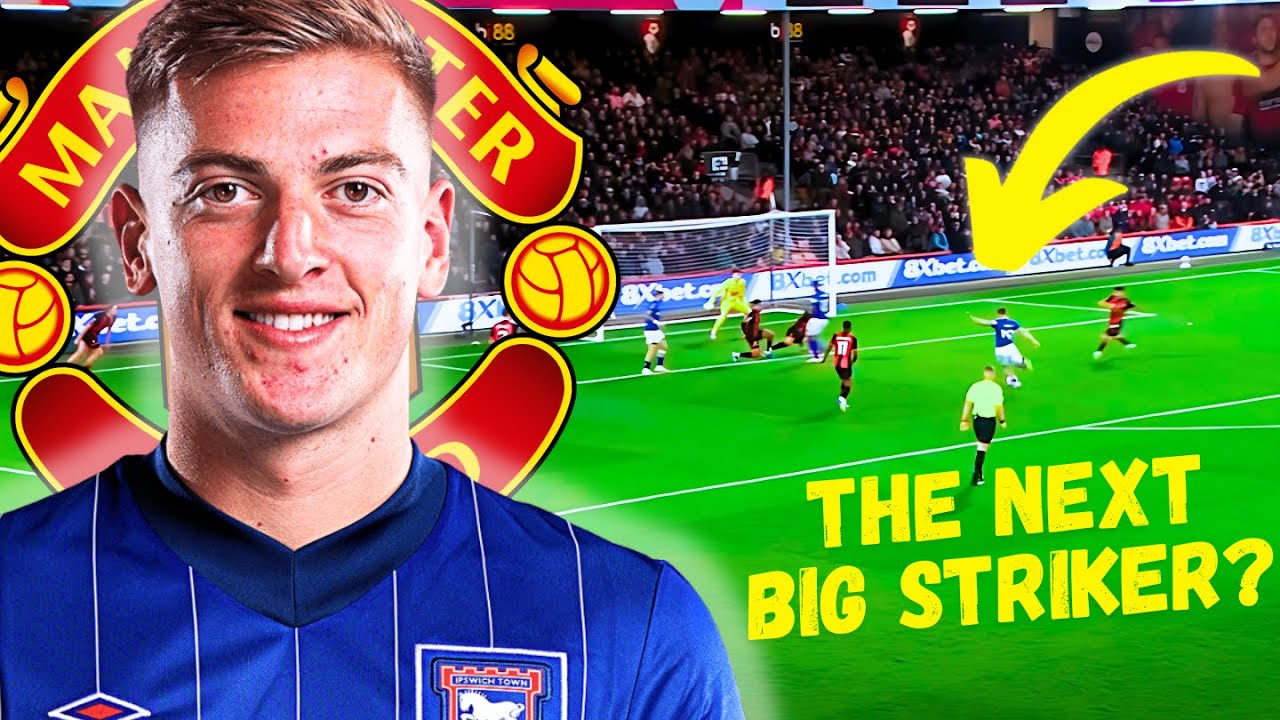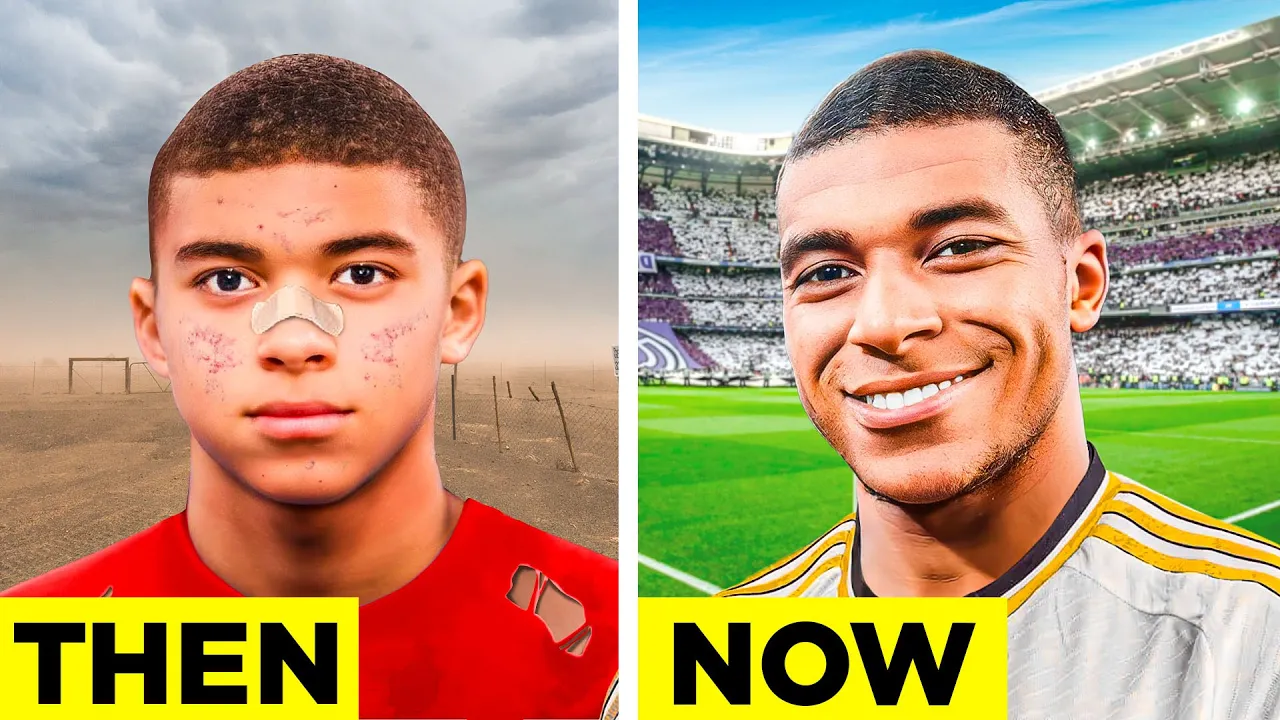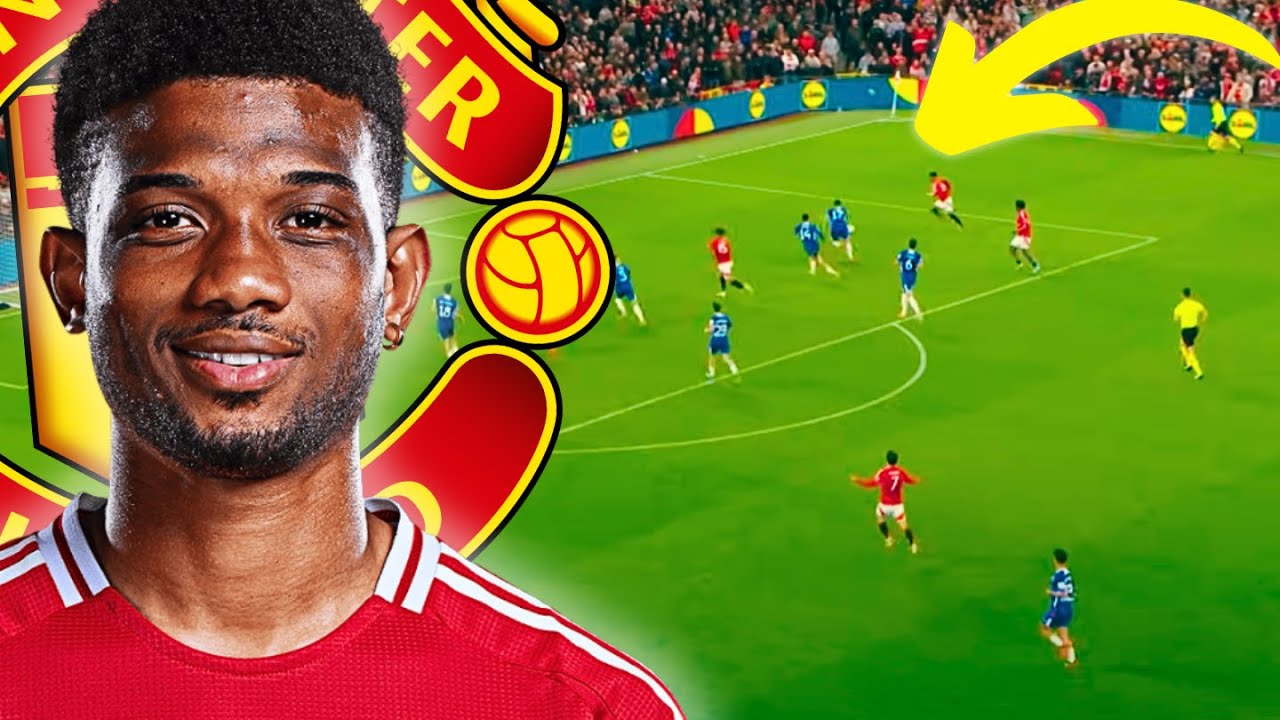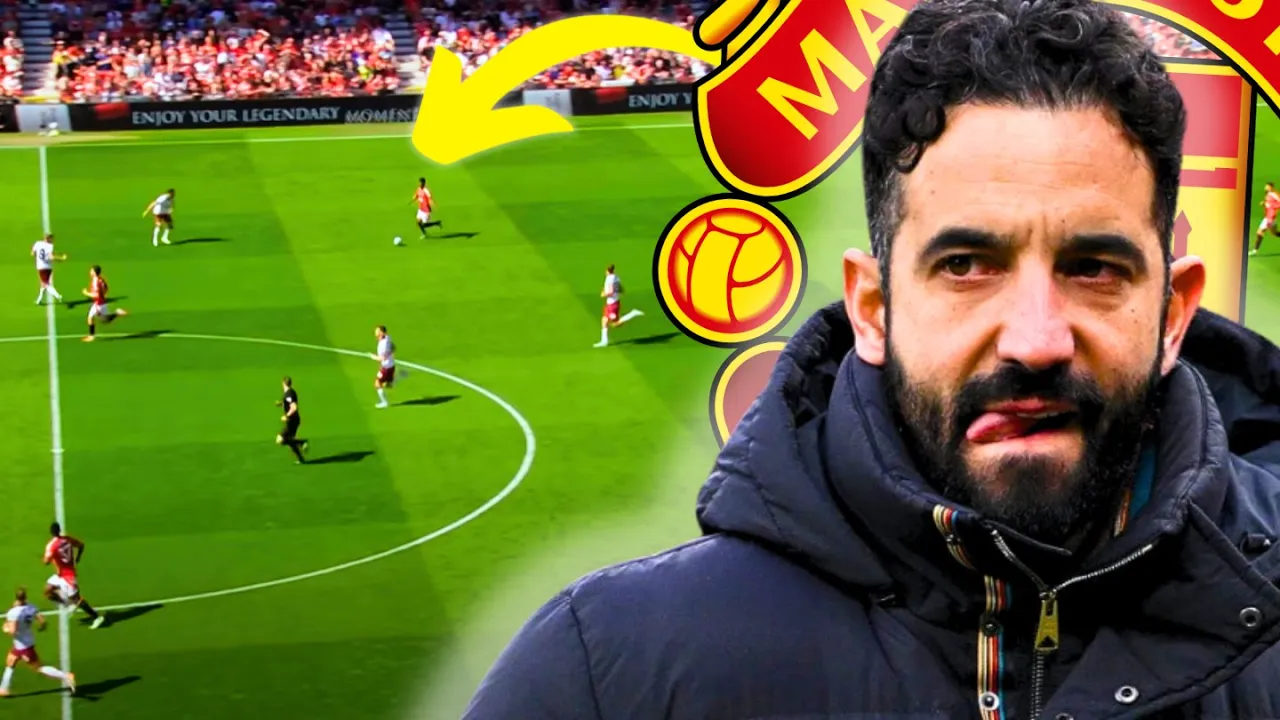How Messi Produced His Most Legendary Performance In El Clasico

In the history of football, there are moments that transcend the sport and become etched in our memories forever. Moments that make our jaws drop, our hearts race, and our imagination wander.
And there’s one player who’s given us more of these moments than any other, Lionel Messi. But among all of the goals, assists, and trophies, there’s one moment that stands above the rest.
One moment that captures the magic and brilliance of Messi like no other. One moment that is undoubtedly iconic.
The grandeur of El Clasico was palpable as Barcelona and Messi stepped onto the pitch, burdened by the weight of recent failures in the Champions League. There was a sense of impending doom hanging over the club.
The loss to Juventus in the Champions League, a 3-0 hammering on aggregate, that had left them looking insipid and limp, only made things worse. And Enrique’s at-times transitional style was not fitting the Barcelona mold, leaving fans, and at times players, unconvinced by his leadership.
The media and press had been relentless in their criticism, and Enrique had succumbed to their whims, and almost a month prior announced his departure from the club after the end of the season. Despite impressive results, it felt like the club was just waiting for a new manager.
To make matters worse, Messi and his team were without one of their linchpins for this match. Neymar, who had been sent off for two bookable offences in a crucial league loss to Malaga, which normally would have meant a one-match suspension.
But the official had included in his report that Neymar had sarcastically clapped him on the way out, and this meant that he would miss an additional two matches. All eyes were on Messi to carry the team, and to prove he was still the talisman of Barcelona. The atmosphere was tense, and the pressure had mounted on Messi.
Standing across from them was one of the most impressive Real Madrid teams in years. Ramos, Marcelo, Modric, Bale, Kroos, and a dangerous Ronaldo were all in their pomp, waiting to tear Barcelona apart.
Where Barcelona had fallen to Juventus mid-week, Real had showed ungodly willpower to send a powerhouse in Bayern Munich crashing out.
Real Madrid also sat top of La Liga by three points, with a game in hand, meaning that a win in El Clasico would all but ensure their first La Liga title in seven years. It was an opportunity too good to miss. The time for talking and what-ifs was over.
The world stood still as the whistle to kick off a Clasico we would remember forever went. Real Madrid came out guns blazing, and Barcelona were on the back foot from the start. They were still the possession kings of Spain and Europe, but Real Madrid started so strongly that Barcelona could barely get a touch.
Real pressed high, a relentless assault, and on goal kicks with Busquets being the sole pivot, Real Madrid targeted him, looking to disrupt his smooth passing football. This was backed up by the rest of the midfield going man-to-man so that subsequent passes were also cut out.
Barcelona struggled, and Messi barely got a touch, with Real Madrid dominating possession early on, and every aspect of the game.
The high press from Real also meant that the Madrid forwards and midfield were dominant in the defensive stats as they put in tackles and made interceptions regularly. And it wasn’t just with the press that Real impressed.
When they had possession, Enrique looked to give Los Blancos a taste of their own medicine, pressing high and hard, but this meant that they had to use a ridiculously high line to back up their press, and this often left a void in the back line, one which the legendary front three of BBC would have dreamt about. And Real Madrid did not hesitate to take advantage.
Time and again they floated the ball over the top, looking to give their forwards something to chase, and slowly they got closer and closer to finding their men. And that wasn’t the only chink in the Barcelona armour that they spotted.
Lionel Messi was a problem when it came to defending. He started nominally off the right-hand side but drifted in, and when it came to defending, well… And this positioning, combined with no tracking back, left Sergi Roberto, who at this stage was still considered a midfielder playing out of position at right back, in a vulnerable position.
Real Madrid wasted no time. Early on the front three was extremely fluid, with no dedicated right winger, so all three could come over to the left-hand side with Kroos controlling and Marcelo overlapping aggressively, looking to overwhelm Barcelona’s right-hand side.
So if Roberto went short to a man, theball over into the space he created was on. But if he stayed deep, Real could find a man to build easily, and this constantly put Barcelona on the back foot. But it got worse. Rakitic could begin to shift across with the rest of the team to try and stem the flow down the Real left-hand side.
But Carvajal down the right would sneak forward, with Kroos and Ramos’ passing range meaning that the switch was always on, and he was a danger.
Not even five minutes in, and Barcelona were hanging on when once again the switch came to Carvajal and… No penalty. Barcelona had gotten away with it, but something had to change soon.
Messi had had just three touches in the opening salvo, and every time the ball broke to the Barcelona midfield, it seemed to bounce right back immediately. But that was until Messi decided to take control.
On 4 minutes 20, with Real still pressing hard, Messi dropped into the midfield, looking to receive, but yet again the pressure meant that Iniesta’s pass was intercepted. But this time the ball broke to Messi, and where everything had seemed hectic before, where Messi got onto the ball, time seemed to slow down.
He held onto the ball for a few seconds, and for the first time in the game, Barcelona had even a short stint of controlled possession.
And when Barcelona had the ball, Madrid defended in a lopsided 4-4-2, with the dangerous duo of Ronaldo and Benzema at centre-forward.
Initially, Gareth Bale was on the left wing and dropped deeper, so Modric operated in the hybrid role on the right, becoming a right winger if Barcelona had the ball down the left, otherwise staying as a central midfielder.
Barcelona’s possession had increased, but even when they had the ball, they lived in the danger zone. Their attacking structure meant that they often had both full-backs advanced, as both of their wingers on paper, in Paco and Messi, tucked in centrally, and the centre-backs pushed high to try and pile the pressure onto the Madridsters.
But once again, they looked shaky, as the centre-backs were isolated against the pace of Ronaldo and Benzema, with Bale and Marcelo not shy to join in. The centre-backs looked desperate at times, looking to use an offside trap, as they knew they’d struggle to keep up with the pace.
So early on, Messi’s positioning changed almost permanently. Rather than playing as a winger or even an attacking midfielder, he moved to central midfield to give the Balgrana easier possession, and keeping possession would make it harder for Madrid to hit on the break, as they would be forced to defend deeper.
Barcelona, when attacking, now had a 4-1-3-2 shape, with overloads in the midfield. Paco alongside Suarez and Alba being hyper-aggressive down the Barcelona left.
But Real Madrid made another change that would help to change the course of the match. Where initially Bale was off the left-hand side in the defensive stance, he soon moved to the right, as the Real front three moved into their natural shape in possession.
Before, Modric was the widest midfielder on the right, and with his engine and defensive nous, he could at least do a decent job in covering the region. But now it was Kroos who was widest off the left-hand side, having to cover the larger region, and he didn’t have the engine or the cover from Ronaldo, who often played as the left forward.
Barcelona smelt it immediately. With Messi deep, Rakitic moved high into the right-hand half-space. Before, the midfield had been man-to-man with Kroos covering Busquets. But now, Messi’s positioning meant that Kroos had to choose between leaving Rakitic free or Busquets deeper free to dictate.
Casemiro found himself with a similar headache. If Toni Kroos was high, would Casemiro cover Rakitic, who was closer to him, or Messi, who was growing increasingly dangerous? The answer for him was obvious. He would spring from defensive midfield to cover the deep Messi.
But as early as the 11th minute, Messi produced a moment that would swing the course of the match. With the ball deep, the Madrid midfield was man-to-man, with Kroos tracked deep by Rakitic and Modric on Iniesta, meaning that Busquets had the easy pass to Messi.
Casemiro sprung forward, but made the mistake of letting Messi turn. The Argentine almost got past him on the first time, but came back for seconds, easing past one of the best defensive midfielders in world football like he wasn’t there. Or at least, it seemed so.
Messi and Casemiro were no strangers, and these two had a storied history. In fact, there is no one opponent that Casemiro has lined up against more often in his career than Messi.
He’s had successes, times where he’s left Messi looking ineffective, but if this was a one-versus-one battle, he had gone behind early. Messi crashed to the floor, but these two old rivals almost respected their dynamic.
Sometimes I’ll get past you, and other times you’ll slice me in half. Casemiro helped Messi up, but the yellow card he picked up this early on could be a problem. game had changed, and since Messi had taken control, the possession had swung to Barcelona.
Real had swaggered early on, but now they began to sit noticeably deeper, with less pressing and more and more dependence on the transition.
And Messi was not a one-man army. Enrique’s possession structure was working a treat. Getting Alcacer to tuck in early was only made possible by the uber-aggressive Alba on the left-hand side being willing to maraud up and down the flank.
The front two’s positioning offered Barcelona’s midfield more protection, because when they did have the ball, neither Ramos nor Nacho could break rank to try and make it a 4 vs 4 in the midfield without taking a stupidly big risk. So again and again, Messi received the ball in space in the midfield.
But Casemiro had played his cards early. He couldn’t just slice through Messi anymore, or he’d be taking an early shower. He had to be careful now, allowing Messi even more space to turn, trying to rely on subtle nudges, shirt pulls, and 50-50 fouls to slow him down.
But Messi was gaining momentum, and with Casemiro shackled, he began to go past him again and again and again. Messi would finish the encounter with a ridiculous 7 dribbles completed, and Casemiro would finish the game having been dribbled past 5 times, more than any other player on the pitch.
And with Toni Kroos and Modric being spread wide by Rakitic and Iniesta, if Messi got past Casemiro, there was a giant hole at the heart of the defence to attack and create for others, which was happening more and more often as the game progressed.
But Real Madrid cannot afford to give Messi this space when he was free. So Casemiro had to push his luck, going for the ball knowing that he might get it, but every tackle also meant he was risking being sent off.
And this happened again and again, until Real Madrid had to send in reinforcements to try and stem the flow. Blood was drawn, and Messi was stopped in his tracks.
Real Madrid were never going to take domination lying down. When they won the ball in the 27th minute, they hit Ronaldo behind the high line on the transition again, leading to the counter and the corner.
The ball was swung in, and Ter Stegen flapped at it, with the ball falling to Marcelo on the edge of the box. He dinked it to the back post, and Ramos’ shot fell to the man who had been tasked to stop Messi. And he made no mistake. 1-0, Real Madrid. Messi bit down on his bloody tissue. The game was just starting.
Now with the lead, Real Madrid sat deeper in a 4-4-2, and pressed even less, meaning that the midfield unit of Barcelona was even higher up the pitch. This made it harder for Benzema to occasionally step in to make it a 4 vs 4 in the midfield. Instead, Kroos had to be dedicated now, to pushing onto Busquets if they wanted to shut him down.
And the Blaugrana could shake things up, especially when Kroos was high on Busquets, where they would then switch to more of a midfield box, with both Messi and Rakitic high, looking to create a 2 vs 1 against Casemiro. So that if the ball came through, at least one of them would be free, with the goal usually being to get Messi free.
Within minutes of going behind, Barcelona found themselves in position. Modric and Kroos were on Busquets and Iniesta, which again left room in the right-hand half-space. Down the right, Gareth Bale had tracked back, but Kroos naturally stayed narrower, and Ronaldo’s role was not really to track back.
Rakitic now drew Kroos, leaving Messi free to drop in. Casemiro followed, but it was too late, and he couldn’t risk another foul. Iniesta on Modric, Rakitic tying up Kroos meant that Busquets was free, and Messi fired a pass into him. Kroos moved to Busquets, which again now meant that Rakitic was free in the half-space.
A gap was created for Messi to attack, because the centre-forwards meant that neither Ramos nor Nacho could spring forward to cover. Rakitic pulled the ball back, and Messi, well, Messi. Not a spark of joy on his face. Pure rage. Barcelona control, and Real Madrid hanging on.
Madrid were still looking dangerous though. While Barcelona were having their own fun, with Alba being hyper-aggressive on the left, Madrid could comfortably match their threat down their own left-hand side, especially with Bale having moved to the right and Ronaldo playing more like a forward.
Marcelo would consistently be the danger when in transition off the left. Even from this deep,looking to catch up with the forwards. But even on those occasions that Real Madrid had controlled possession, he continued to make inroads down the left, especially with Messi high and narrow.
This did at times have some advantages for Barcelona, as Suarez and Messi could camp in this region, ready to transition behind them. But Enrique knew that they were playing with fire. They adapted.
Rakitic would drop deep, almost to right wing back, forming a back five to try and deal with the threat. It left them extremely light and vulnerable through the centre, but it was a risk that Enrique had to take.
But even with the extra defender, Marcelo had the beating of Rakitic in attacking situations, and as such, kept getting into dangerous zones. But as the half drew to a close, Barcelona were defending in this weird 5-2-3 shape, when they had the chance to transition.
Suarez dropped in from centre forward and found Messi in space, who was now running at the defenders. Casemiro was in hot pursuit, but had a yellow card hovering over his head. But he couldn’t let Messi go regardless.
No card was shown, but the Barcelona bench went mad. It was another close call for Casemiro, and he knew it. The first half was over. The match was even, but as Messi spit the bloody tissue out of his mouth, he sensed there was more to come.
The second half started off with similar themes as the end of the first. Barcelona dominated the ball and were aggressive with the high line, trying to compact the pitch as much as possible. But Real Madrid maintained their threat, through Marcelo crashing forwards.
But the transition was the key region. Asensio had come on for Bale and looked just as dangerous. The 66th minute was the perfect example. Alba was high attacking, as always, so when Asensio dropped in on the transition, he drew Umtiti, but Benzema pulling wide received the ball and meant that Pique had also been dragged wide, leaving a massive gap for Asensio to receive the return pass through, while Ronaldo was bursting forward on the left hand side.
Asensio could have lined up the shot, but he squared the ball to Ronaldo who was perfectly positioned, but the ball was slightly behind Ronaldo who was moving at pace and the ball ballooned over.
Meanwhile, the battle within the war of Casemiro and Messi kept raging on. Casemiro was even more cautious now, meaning Messi was finding it easier and easier to get past him, and in moments of frustration, Casemiro would still foul, but still, no second yellow.
But even a cat only has nine lives. The glances to the bench after every foul had turned into long glares. Ancelotti adapted. Ramos was now using his discretion, pushing up from centre back to be the man to pressure Messi, instead of Casemiro, if Messi was not too deep.
But it wasn’t enough. Ancelotti wasn’t taking any more risks, and finally Kovacic came on for Casemiro. Messi no longer had the biggest defensive nuisance of his career picking him up anymore.
With his newfound freedom, Messi orchestrated. He dropped deep and Kovacic followed, but without the intensity of Casemiro, allowing Messi to stroke it wide and receive the return pass at a leisurely pace. With a shimmy, he got past the Croatian in the same play, looking for Alba.
Eventually the ball fell to Alba, and as we saw throughout the match, he was getting into dangerous positions, and he looked to arrow a ball into Messi, who had again gotten away from Kovacic. Messi was tackled but the ball fell to Rakitic, who controlled it, moved it onto his weak foot, and arrowed it into the top corner. 2-1 Barcelona.
But the drama was just beginning. Madrid looked to regather themselves, still targeting the area behind Rakitic, this time with Benzema joining Marcelo wide. But when the ball broke to Messi, Kroos, Marcelo and the rest of the midfield were all the wrong side of Messi.
They no longer had the imperious cover of Casemiro. Messi brought the ball down, his mind already thinking about attacking the Real Madrid goal. But that was before… A potential career-ending tackle. The red card was instant. Ramos walked and it was clear the frustration had taken over. A goal down and a man down, Real Madrid were out of El Clasico.
They put their heads down and knew they had no chance of making a comeback. Except… It’s Real Madrid, so of course they didn’t think any of that. Odds be damned, they kept piling on the pressure, throwing numbers forward, leaving themselves exposed on the break, meaning that at times Kovacic had to do his best Casemiro impression.
But on the ball, being this brave had advantages for Real Madrid. Barcelona’s backfired. Barcelona’s back five, with Rakitic at right wing back, was now a six, as Gomez, on for Paco, was at left wing back even against ten men, meaning they played with a 6-2-1-1. It was a decision that came back to haunt them.
Real Madrid worked the ball to their right hand side, meaning that the midfield two of Barcelona were dragged across. This allowed Kroos down the left to saunter into the half space, forcing Rakitic to confront him and giving Marcelo acres of space down the outside. He took his time, lined up the perfect cross, and James finished. The Bernabeu exploded.
With their superior head-to-head, all Real Madrid really needed in this match was a draw to all but seal the title. But they wanted it all, and even with the game even, they would defend in a 6-3-1, but would look for any excuse to counter-attack. Barcelona had gone from cruise control to just barely hanging on. Real Madrid also smelled blood.
With the ball out for a throw in the Barcelona half, they looked to box in the Blaugrana for the final few minutes of the game, sniffing out one final chance. But high up, they got their press wrong, allowing Sergio Roberto to emerge in the midfield. He got past Modric, and Marcelo, having been booked for his early attack on Messi, pulled out of the tackle.
All of a sudden, Roberto was running at the back line. As he had all match, Jordi Alba galloped down the left and got on the ball.
While everyone else on the pitch looked to run as fast as they could towards the Real goal, Messi calmly paused and assessed. And in that moment he saw it, the space, the opportunity. Like clockwork, as they had done so many times,




